Relations of COVID-19 and the Risk Management Framework
Abstract
:1. Introduction
2. Risk and Risk Management
- Known risks
- Specific risks
- Novel risks
- there are no specific internal norms/procedures that cover problems related to these risks; (e.g., emergency plan that covers mitigating strategies),
- there are no available resources related to mitigating these risks,
- there is a lack of know-how; the experience is very limited and application of procedures is based on the scheme “learning by doing” or “learning from mistakes” to mitigate consequences,
- after overcoming any specific novel risk all procedures, internal norms will be transferred into the category of known risks or specific risks with all pragmatic consequences for risk management in an organization (COVID-19 is included in this risk category).
- (a)
- are there any methods that allow a risk management staff to forecast novel risk?
- (b)
- what structures are reasonable to reflex new challenges?
- (c)
- what resources must be established (on the place)?
- How completely and faithfully does it represent the knowledge and information available?
- How costly is the analysis?
- How much confidence does the decision-maker gain from the analysis and the presentation of the results? (This opens up the issue of how one can measure such confidence).
- common approaches applied in crisis management,
- communication of heterogeneous teams to support decisions of central crisis management team; the similar organizational structures create on regional and district levels,
- all measures decided to apply by central crisis management team communicate with organizational bodies representing different stakeholders.
3. Research Methodology
- Presentation of the theoretical background on the basis of standard literature
- Gathering data/information through a literature review and interviews
- Risk identification–ex post (based on phases (1) and (2))
- Risk classification (risk known and risk unknown)
- Risk mitigation strategies (guidelines for governing bodies)
- in the next (possible) wave of COVID-19 risks are already identified and therefore emergency plans, the necessary resources can be forecasted (transfer from novel risk to known risk),
- the phase risk analysis should not be omitted but simplified, to demonstrate not significantly modified virus and expected consequences and/or mitigating strategies.
4. Practical and Theoretical Aspects of Risk Management during COVID-19
4.1. Methods to Forecast Novel Risks
- The future is unpredictable; therefore, any attempt to estimate the future is unreasonable. In the book [26] the author expressed his opinion on this problem: “The illusion that we must understand the past goes hand in hand with another illusion that one can anticipate and control the future. These illusions reassure us. They reduce the anxiety we would experience if we allowed ourselves to fully recognize the uncertainty of existence. We all need reassurance that action has reasonable consequences and that wisdom and courage are rewarded with success”.
- The future is predictable as we always can identify causes and consequences; this approach is based on the deterministic behaviour of the world and the ability of analysts to identify all relevant features determining causes and consequences.
- The future is uncertain because of VUCA and the limits of human knowledge.
4.2. Organizational Structures and Managerial Bodies
- analyse the consequences; for this reason, it is appropriate to include in this structure experts with appropriate knowledge in specific fields,
- to take all necessary measures to mitigate the consequences,
- communicate with the communities,
- identify all stakeholders in order to analyse their objections and take actions based on them,
- promote a culture that accepts the role and actions of the crisis team and
- create networks to collect and synthesise data; decisions should be based on data that provide a “picture” of the short-term evolution and effectiveness of the approved COVID-19 mitigation strategies.
4.3. Resources
- employees, inhabitants,
- technology, infrastructure,
- communication systems,
- ethos, culture and
- know-how
- others.
- Technology is seen here as a material source for mitigating negative consequences.
- Communication is one of the most important aspects of managing a crisis. There are some specifics when talking about crisis communication.
- Ethos/culture in the context of the paper is understood as the approach toward negative consequences of pandemics at all levels in an organization. The ethos can unify human resources and positively motivate behaviour that mitigates negative consequences. Ethos in this relationship strengthens the unity of human resources in a positive attitude to applied preventive or reactive measures.
- Know-how is the ability of an organisation/country to develop and implement procedures, material resources (vaccination) to minimise the negative consequences of the pandemic.
4.4. COVID-19 as the Source of Crisis
- is unwanted,
- complex; crisis management is the application of a set of measures that must respect the constraints of the environment,
- endangers the existence of the system, the fulfilment of its objectives,
- exposes crisis managers to psychological pressure and stress when making decisions in changing conditions,
- depending on the specificity can be global and
- requires the available resources to minimize the causes and consequences of the crisis; these resources are human, technical, financial and other (depending on the nature of the crisis).
- scope and complexity,
- diversity of information and information sources,
- diversity of users of information and
- infrastructure status.
- decision making in stress,
- decision-making under constantly changing conditions, which corresponds to decision-making reactive in the meaning of reacting to the current situation,
- ever-changing conditions create uncertainty in decision-making; uncertainty stems from a lack of data and possible ignorance of the decision-maker (given the lack of experience from past crises) and
- political and social decision-making, which corresponds to the diverse goals of stakeholders.
4.5. Slovakia and COVID-19
- unclear and constantly changing conditions for citizens, pendlers and businesses,
- missing and unclear border restrictions,
- attitude towards vaccination, implementation of testing has become a subject of political struggle,
- confused communication by political leaders and on the issue of prevention and measures taken,
- the lack of a strategy for a course of action to minimise the impact of the pandemic (availability of medical and economic resources),
- inflexible system of financial support for the population and entrepreneurs,
- the absence of a system of measures for the reception of returning Slovaks from abroad,
- others.
5. Risk Management and the Pandemic Novelty Risk Using the Example of COVID-19
- presents the alignment of COVID-19 and the risk management framework, and
- propose the framework when dealing with COVID-19.
- there are enough capacities to heal COVID-19 patients; this reflects in mortality low rate, low rate of infected; the measures should be compared (benchmark) to other countries;
- qualitative measures describe the efficiency of cooperation all relevant bodies-political representatives, health care facilities, community facilities and institutions, that support mitigating strategies;
- in cases related to communications or other activities based on risk unknown event there should be proposed time scales/objectives and crisis teams should control their fulfilment;
- one of the most crucial aspect during COVID-19 is to establish competencies of governing institutions; the strategy should be clearly
- formulated with competencies of major players; based on the experience there can be positions and competencies modified (ideally as the consensus of all stakeholders);
- to apply measures, to identify effectiveness of measures with data/models should be one of the crisis team’s major objectives; existing and new models for forecasting should be permanently evaluated and if necessary modified.
6. Conclusions
Author Contributions
Funding
Institutional Review Board Statement
Informed Consent Statement
Data Availability Statement
Acknowledgments
Conflicts of Interest
References
- Casajus Valles, A.; Marin Ferrer, M.; Poljanšek, K.; Clark, I. (Eds.) Science for Disaster Risk Management 2020: Acting Today, Protecting Tomorrow, EUR 30183 EN; JRC114026; Publications Office of the European Union: Luxembourg, 2020; ISBN 978-92-76-18181-1. [Google Scholar] [CrossRef]
- ISO 31000:2018(en) Risk Management—Guidelines. 2018. Available online: https://www.iso.org/obp/ui/#iso:std:iso:31000:ed-2:v1:en (accessed on 2 October 2020).
- Tullo, L. COVID-19 triggers great nonfinancial risk crisis: Nonfinancial risk management best practices in Canada. J. Risk Manag. Financ. Inst. 2021, 14, 40–58. [Google Scholar]
- Pearson, C.M.; Clair, J.A. Reframing Crisis Management. Acad. Manag. Rev. 1998, 23, 59–76. [Google Scholar] [CrossRef]
- Hiles, A. The Definite Handbook of Business Continuity Management; Wiley: Hoboken, NJ, USA, 2010; ISBN 978-0-470-67014-9. [Google Scholar]
- Hassani, B.K. Scenario Analysis in Risk Management; Springer: Berlin/Heidelberg, Germany, 2016; ISBN 978-3-319-25056-4. [Google Scholar]
- Verikios, G.; Sullivan, M.; Stojanovski, P.; Glesecke, J.; Woo, G. Assessing Regional Risks from Pandemic Influenza. The World Economy; Wiley: Hoboken, NJ, USA, 2016; Volume 39. [Google Scholar]
- Taleb, N.N. The Black Swan; Random House: New York, NY, USA, 2007; ISBN 978-1-4000-6351-2. [Google Scholar]
- Mondragon, A.E.C. The Effects of Low-Probability, High-Impact Events on Automotive Supply Chains: Black Swans and the 2011 Earthquake-Tsunami Disaster that Hit Japan. In CEC Sustaining Industrial Competitiveness after the Crisis: Lessons from the Automotive Industry; Japan External Trade Organization: Tokyo, Japan, 2012; pp. 104–113. [Google Scholar]
- Takeuchi, Y. Strategies for Managing Low-Probability, High-Impact Events. In Learning from Megadisasters; Lessons from the Great East Japan Earthquake; World Bank: New York, NY, USA, 2014; pp. 297–304. [Google Scholar]
- Wurster, S.; Klafft, M.; Fuchs-Kittowski, F. High Impact–Low Probability Incidents at a Coastal Metropolis: Flood Events and Risk Mitigation by Crowd-Tasking Systems. In Proceedings of the 2016 3rd International Conference on Information and Communication Technologies for Disaster Management (ICT-DM), Vienna, Austria, 13–15 December 2016; pp. 207–209. [Google Scholar]
- Sartor, F.J.; Bourauel, C. Risikomanagement Kompakt; Oldenbourg Verlag München: München, Germany, 2013; ISBN 978-3-486-70810-3. [Google Scholar]
- Rebooting Risk Management, Deloitte Insights. Available online: https://www2.deloitte.com/us/en/insights/economy/covid-19/risk-management-during-covid-19.html (accessed on 4 October 2020).
- Bromiley, P.; Rau, D.; McShane, M.K. Can Strategic Risk Management Contribute to Enterprise Risk Management? A Strategic Management Perspective; Finance Faculty Publications: California, CA, USA, 2015; Volume 3, Available online: https://digitalcommons.odu.edu/finance_facpubs/3 (accessed on 2 October 2021).
- Bouchouicha, R.; Vieider, F.M. Accommodating stake effects under prospect theory. J. Risk Uncertain. 2017, 55, 1–28. [Google Scholar] [CrossRef] [Green Version]
- Mehrotra, S.; Znati, T.; Craig, W. Thompson: Crisis Management. IEEE Internet Comput. 2008, 12, 14–17. Available online: https://www.researchgate.net/publication/3420014_Crisis_Management (accessed on 3 October 2020). [CrossRef]
- Kaplan, R.S.; Leonard, H.B.; Mikes, A. Novel Risks, Working Paper 20-094, Harvard. Available online: https://www.hbs.edu/faculty/Pages/item.aspx?num=57892 (accessed on 2 October 2020).
- Kaplan, R.S.; Mikes, A. Risk Management—The Revealing hand. Working Paper 16-102, Harvard. 2016. Available online: https://www.hbs.edu/ris/Publication%20Files/16-102_397b963b-1a8b-4dcf-942f-e45acc8c9e96.pdf (accessed on 4 October 2020).
- Knight, F.H. Risk, Uncertainty and Profit. University of Illinois at Urbana-Champaign’s Academy for Entrepreneurial Leadership, Abstract. Available online: https://ssrn.com/abstract=1496192 (accessed on 2 October 2020).
- Sharma, P.; Leung, T.Y.; Kingshott, R.P.J.; Davcik, N.S.; Cardinali, S. Managing uncertainty during a global pandemic: An internationals business perspective. J. Bus. Res. 2020, 116, 188–192. [Google Scholar] [CrossRef] [PubMed]
- Stewart, D.W. Uncertainty and Risk Are Multidimensional: Lessons from the COVID-19 Pandemic. J. Public Policy Mark. 2021, 40, 97–98. [Google Scholar] [CrossRef]
- Mikes, A. From Counting Risk to Making risk Count; Working Paper 11-069; Harward Business School: Boston, MA, USA, 2011; Available online: www.hbs.edu/ris/Publications%20Files/11-069.pdf (accessed on 3 October 2020).
- Roth, F. Visualizing Risk. Research Collection; ETH Zurich: Zürich, Switzerland, 2012. [Google Scholar] [CrossRef]
- Pedroni, N.; Zio, E. Uncertainty Analysis in Fault Tree Models with Dependent Basic Events. Risk Anal. 2013, 33, 1146–1173. [Google Scholar] [CrossRef] [PubMed] [Green Version]
- ISO 31010:2019 Risk Management–Risk Assessment Techniques. 2019. Available online: https://www.academia.edu/41536420/ISO_31010_2019_Risk_management_-Risk_assessment_techniques_Management_du_risque_-echniques_dappr%C3%A9ciation_du_risque (accessed on 3 October 2020).
- Kahneman, D. Myslenie Rýchle a Pomalé (Thinking: Fast and Slow); Aktuell: Bratislava, Slovakia, 2019; ISBN 978-80-8172-056-7. [Google Scholar]
- ISO/IEC Guide 51:1999, Safety Aspects–Guidelines for Their Inclusion in Standards. 51:1999. Available online: http://www.electropedia.org/iev/iev.nsf/display?openform&ievref=351-57-03 (accessed on 4 October 2020).
- Fonseca, L.M.; Azevedo, A.L. COVID-19: Outcomes for Global Supply Chains. Manag. Mark. 2020, 15, 424–438. [Google Scholar] [CrossRef]
- Derevyankina, E.S.; Yankovskaya, D.G. The impact of Covid-19 on supply chain management and global economy development. Int. J. Supply Chain. Manag. 2020, 9, 765–774. [Google Scholar]
- Coronavirus (COVID-19) in the Slovak Republic. Available online: https://korona.gov.sk/en/ (accessed on 1 September 2021).
- Business Emergency Operations Center (BEOC) Quick Start Guidence for COVID-19 Response and Recovery. 2020. Available online: https://www.fema.gov/sites/default/files/2020-07/fema_covid_bp_business-emergency-operations-quick-start-guidance.pdf (accessed on 1 October 2020).
- Chuanyi, W.; Zhe, C.; Yue, X.-G.; McAleer, M. Risk Management by Universities in China. J. Risk Financ. Manag. 2020, 13, 36. [Google Scholar] [CrossRef] [Green Version]
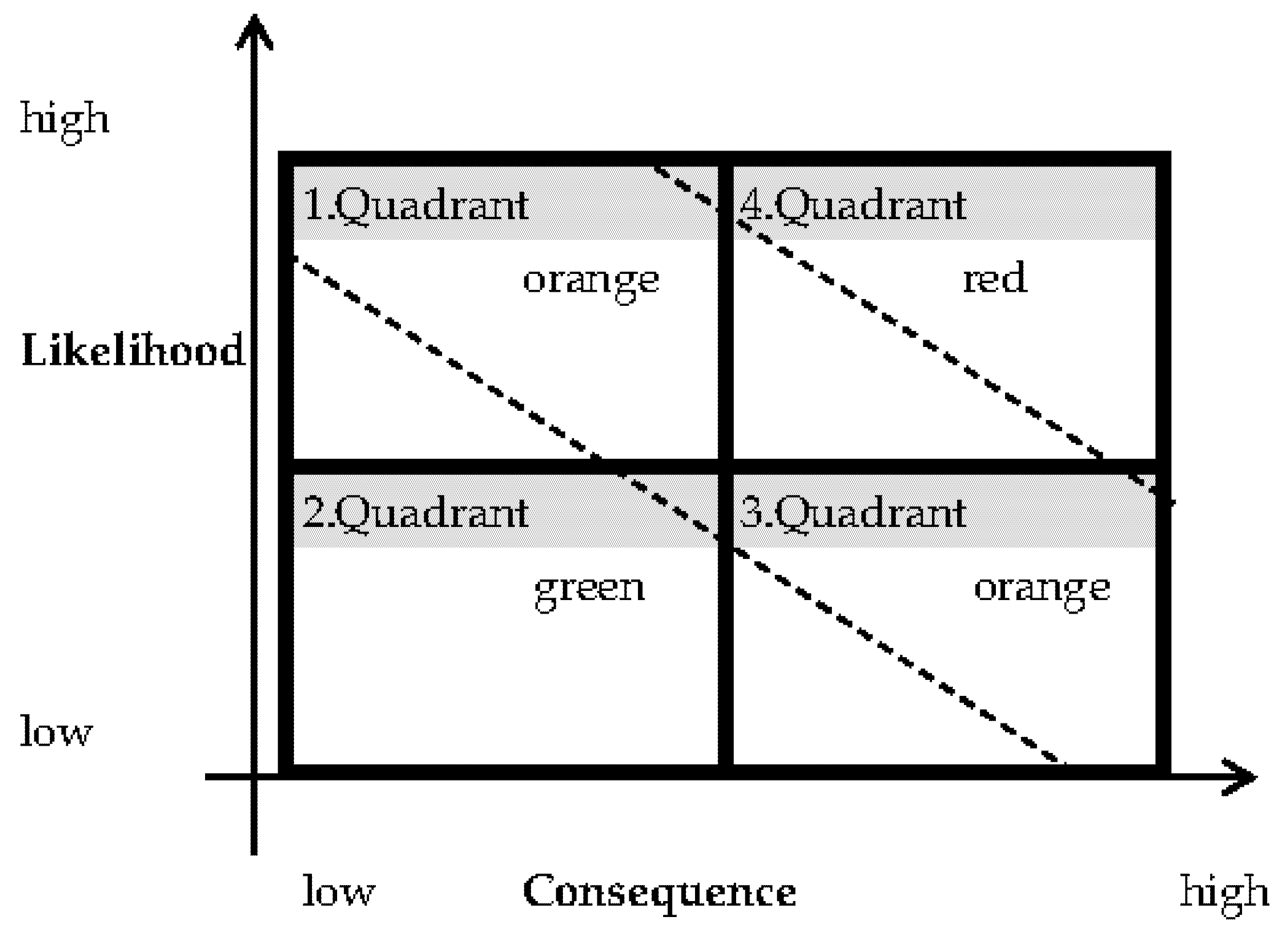
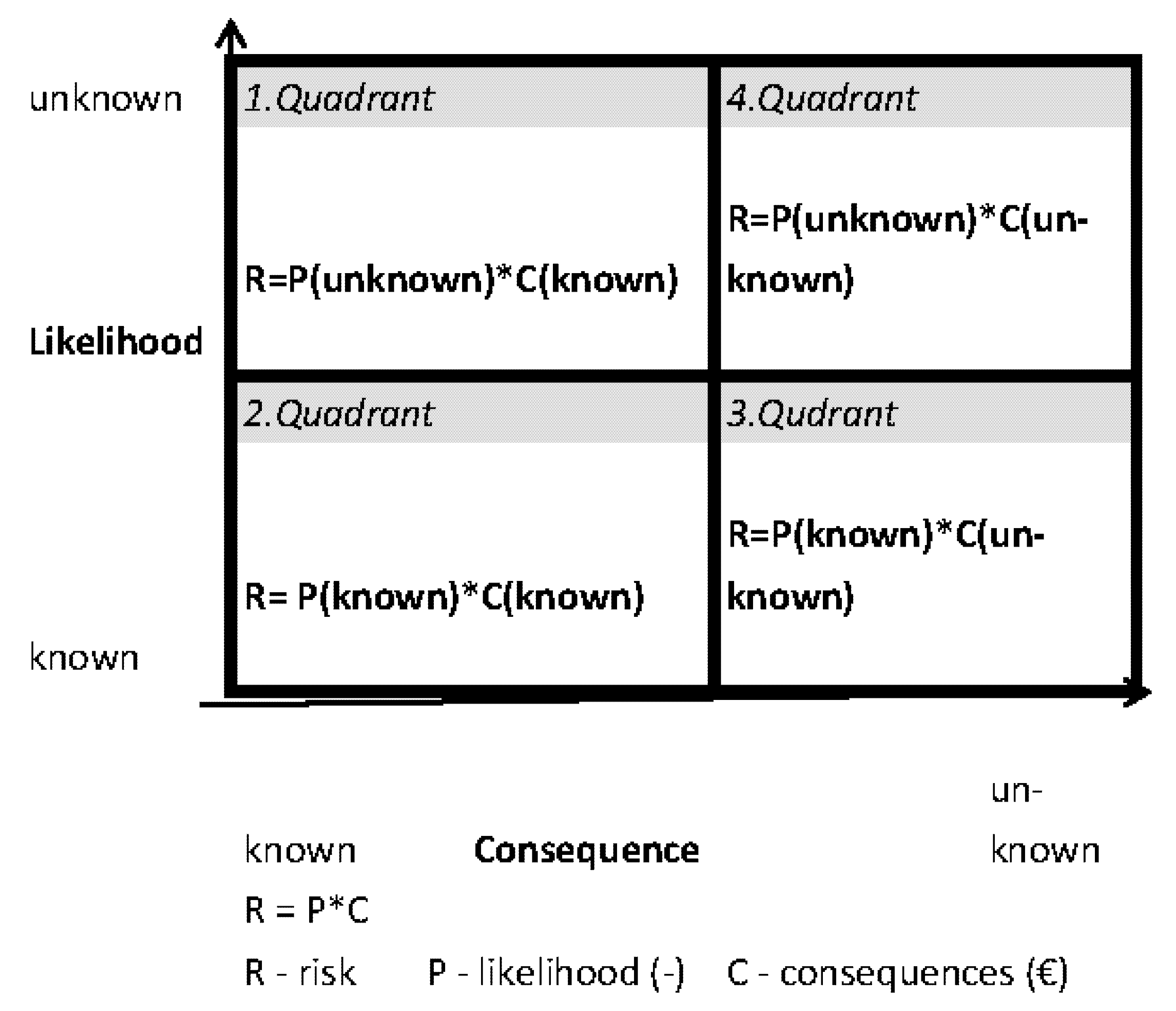
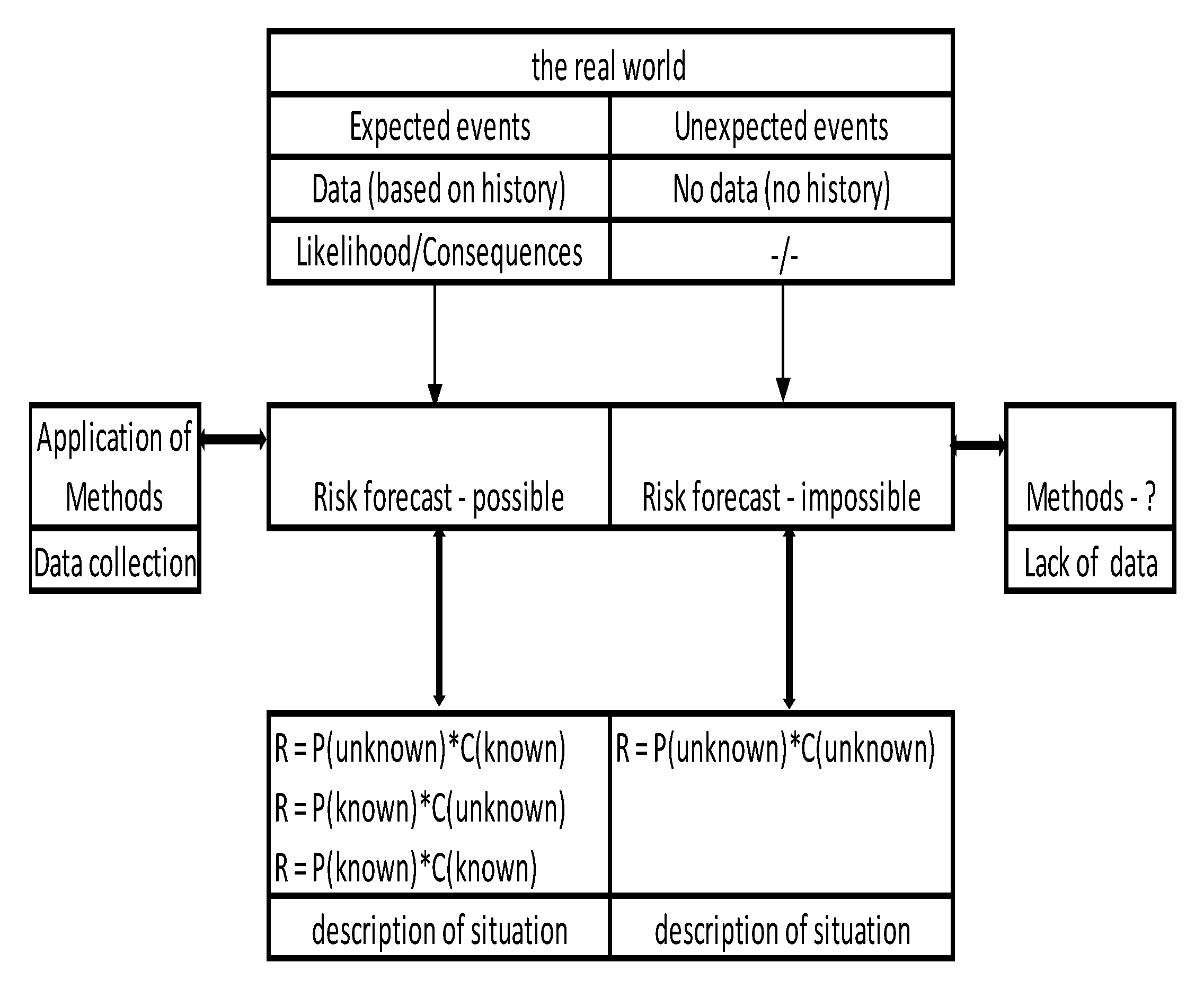
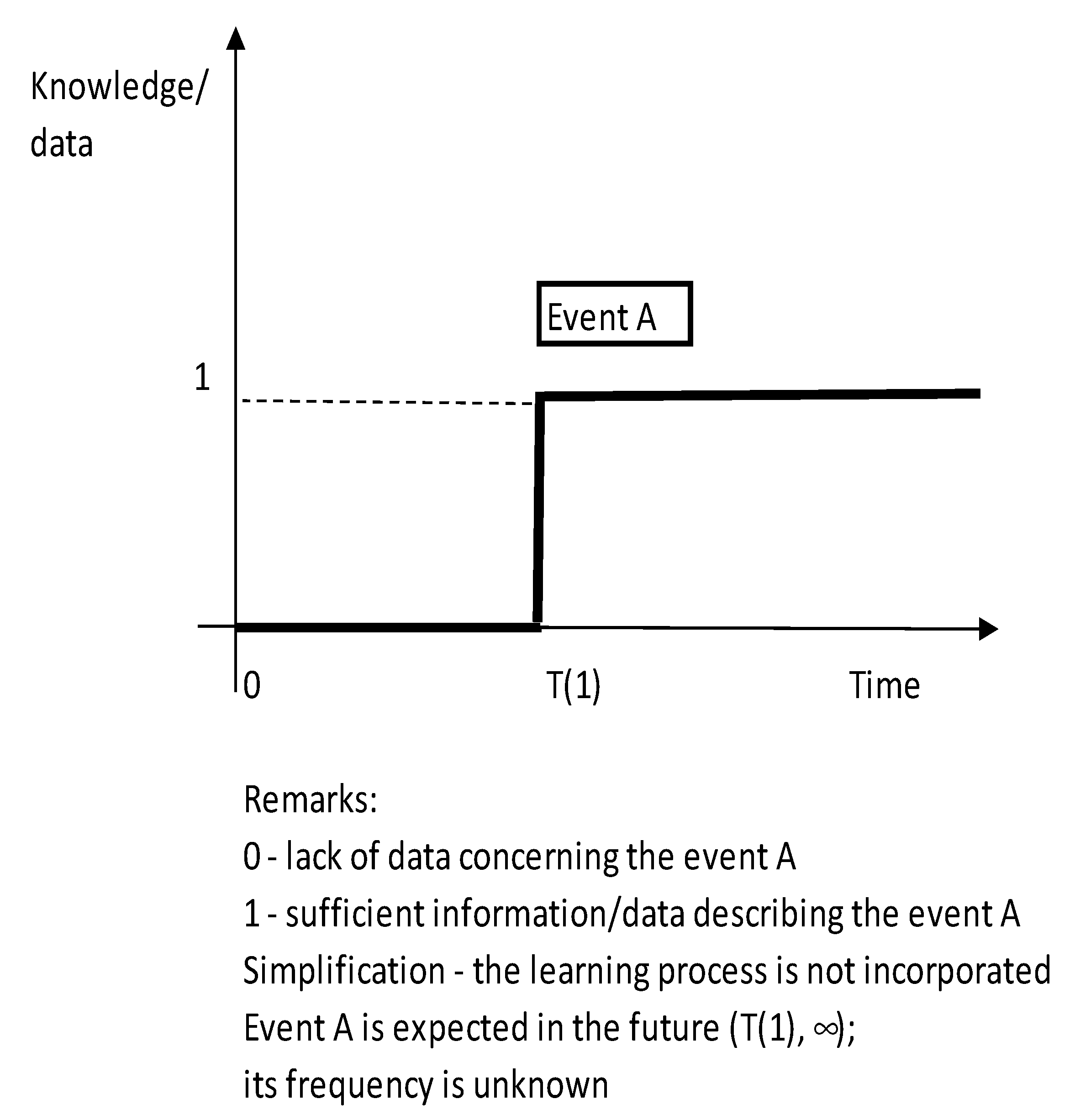
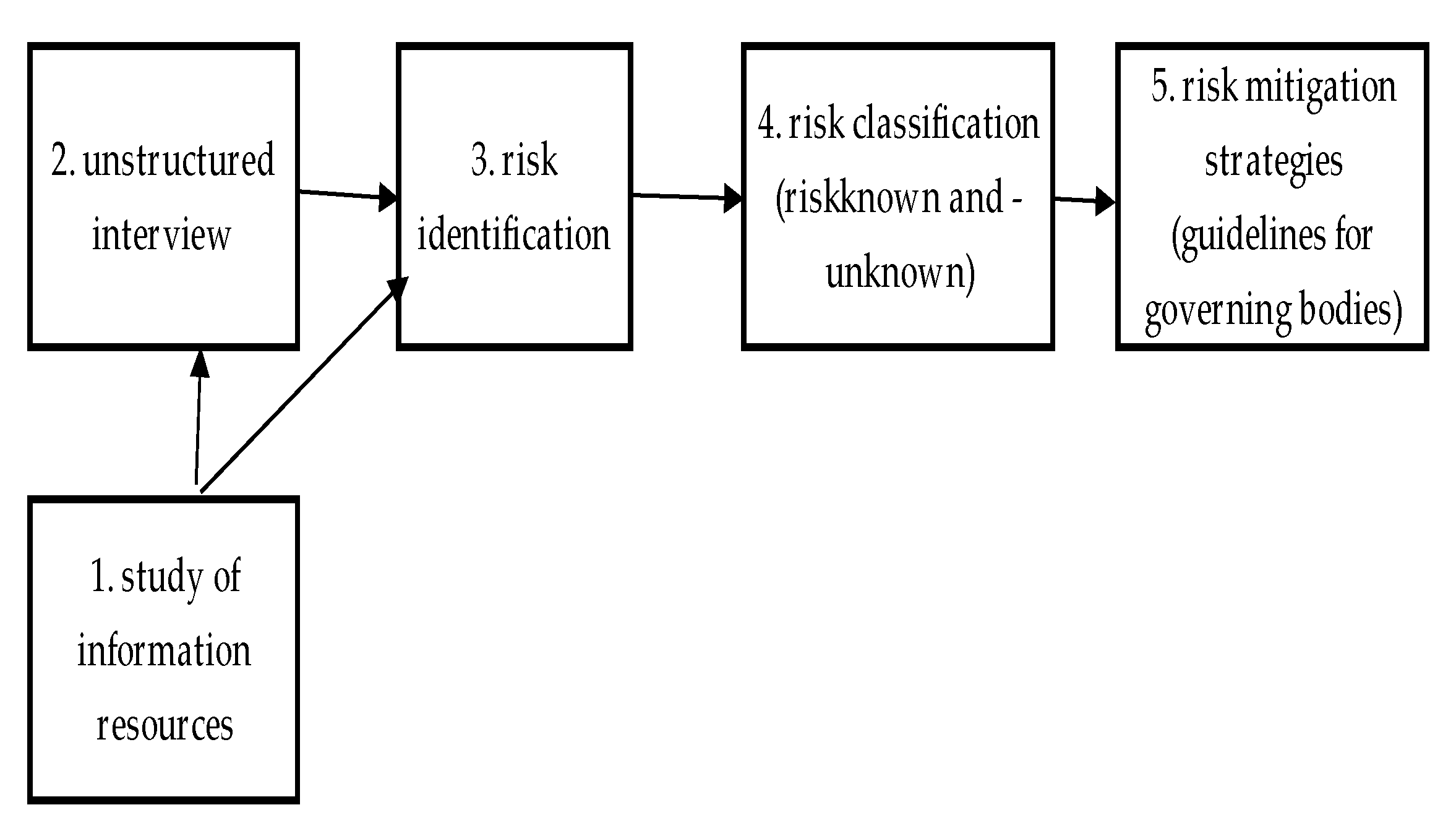
| Plan | Engage | Integrate |
|---|---|---|
|
|
|
|
|
|
| ||
| Goal: Maximize partnership for COVID-19 response and recovery | ||
| Problem/Risk Description | Risk-Known | Risk-Unknown | Mitigating Strategy |
|---|---|---|---|
| A mix of COVID-19 measures and government strategy with the political struggle | Cooperation and communication of stakeholders | Pandemic spread mechanism | The minimisation initiative should be based on consensus-without political turmoil; only a widely accepted strategy can bring positive results. |
| Insufficient capacities (medical staff, other material resources) | Unprepared staff, unavailable vaccines | Sufficient material and staff capacity; vaccination strategy | The flexible conversion of existing capacities by transforming them to COVID-19 conditions, communication with other stakeholders to meet needs, special material and equipment required. |
| Lack of communication with stakeholders | Unprepared staff; lack of crisis communication skills; not prepared crisis communication strategy/manual | Factors related to communications content and key stakeholders for crisis communication | Clear and straightforward communication from government representatives (or other competent authorities); communication of the assumptions and expected consequences of planned measures; explanation of the expected benefits due to the measures applied; communication should be seen as a tool to unify the behaviour of all stakeholders. |
| Unclear definition of responsible authorities/entities and their competencies | List of available experts and their professional capacity | Mobilised professional staff/expert related to the specific feature of COVID-19 | Establish the structure of the crisis teams (central/regional/district) and clarify responsibilities; due to the dynamic hazard situation, this should be adapted to the current situation; the strategy is formulated and modified at the highest level, the concrete implementation of the adopted measures is carried out (modified if necessary) by the district crisis authorities. |
| Lack of data structures, IT networks to support processes and management decisions with COVID-19 consequences. | Content of data structure and available professional staff capacity; availability of know-how when dealing with pandemic models | Structure of data and data management in responsible institutions | IT networks should be established to enable tracking (to identify positive individuals) and monitoring of the current status of the pandemic situation in the state, regions and districts; the structure of the data should be clear and cover the most important events in order to apply relevant decisions and strategies to contain the pandemic. |
| Interdisciplinary approach not accepted | Complex and interrelated approach supporting crisis cooperation | Relevancy of complex approach and its applications in crisis decision adaptations; ability to transfer different opposed stakeholders’ objectives | There must be a consensus that the applied measures during COVID-19 must be based on the consensus of the relevant stakeholders; the complexity of the phenomena should be seen in the applied measures (Central Crisis Team, Pandemic Committee and Economic Crisis Committee in the Slovak Republic). |
| International cooperation not accepted | Complex consequences on the current country | Scope of consequences and its management by organizations/institutions | The global impact of COVID-19 determines the necessity for international cooperation and coordination; regularly update procedures for accommodating passengers from countries at risk |
Publisher’s Note: MDPI stays neutral with regard to jurisdictional claims in published maps and institutional affiliations. |
© 2021 by the authors. Licensee MDPI, Basel, Switzerland. This article is an open access article distributed under the terms and conditions of the Creative Commons Attribution (CC BY) license (https://creativecommons.org/licenses/by/4.0/).
Share and Cite
Klucka, J.; Gruenbichler, R.; Ristvej, J. Relations of COVID-19 and the Risk Management Framework. Sustainability 2021, 13, 11854. https://doi.org/10.3390/su132111854
Klucka J, Gruenbichler R, Ristvej J. Relations of COVID-19 and the Risk Management Framework. Sustainability. 2021; 13(21):11854. https://doi.org/10.3390/su132111854
Chicago/Turabian StyleKlucka, Jozef, Rudolf Gruenbichler, and Jozef Ristvej. 2021. "Relations of COVID-19 and the Risk Management Framework" Sustainability 13, no. 21: 11854. https://doi.org/10.3390/su132111854
APA StyleKlucka, J., Gruenbichler, R., & Ristvej, J. (2021). Relations of COVID-19 and the Risk Management Framework. Sustainability, 13(21), 11854. https://doi.org/10.3390/su132111854







